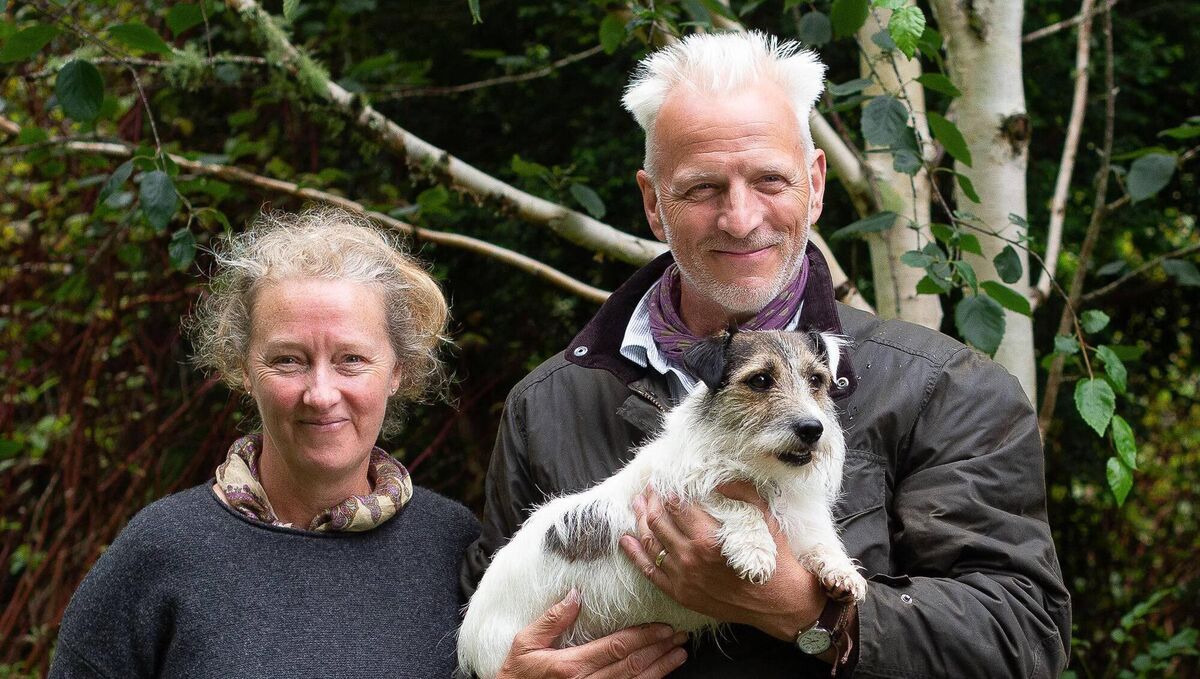Consider the things that happen in our lives: Messy and often incoherent incidents best understood in the rearview mirror, if we can understand them at all.
Then consider what we read about life, how it’s presented to us in books.
As readers, we’re used to consuming other people’s lives as if they’re lessons in how to live: How to deal with adversity and how to overcome it.
Things might go badly in our own lives, but we’re fundamentally optimistic, so we want true stories that conform to that worldview.
If reality is a show, then we want our narrator to win.
And the publishing industry supplies those tales.
The tragedy-to-triumph structure that such books conform to only tangentially resemble the reality we inhabit.
A recent Observer article investigated Raynor Winn, the author of the hit memoir The Salt Path, and cast doubt on the twin inciting incidents of the book: Her husband’s illness and the circumstances of their debt and subsequent loss of their house.
Outcry ensued.
There is how you remember things and there are the facts.
Some facts can’t be established except through memory — for example, how you felt at a certain time and place — and depend on a certain literary artfulness.
Then there are others you can verify simply by looking at your bank records, checking your old messages or emails, or consulting your diary.
What about the fact-checking process? Commentators have asked this question in relation to the Winn book.
The truth is that much of what’s published doesn’t undergo the forensic examination by an editor that we might like to imagine.
Partly this is related to the economics of publishing: There are fewer people, each carrying out a vast array of tasks, resulting in less time to do the kind of in-depth editing that can smoke out factually inaccurate material.
Many of the factual mistakes in books might be honest mistakes, but that doesn’t make them any truer.
The other side of it is that nobody wants to question a good story, not even book publishers.
 Writer Raynor Winn, husband Moth, and dog Monty. A recent ‘Observer’ article investigated Winn and cast doubt on the twin inciting incidents of the book: Her husband’s illness and the circumstances of their debt and subsequent loss of their house. Picture: Ben Russell
Writer Raynor Winn, husband Moth, and dog Monty. A recent ‘Observer’ article investigated Winn and cast doubt on the twin inciting incidents of the book: Her husband’s illness and the circumstances of their debt and subsequent loss of their house. Picture: Ben Russell
Consider this process: A book proposal is sent to an editor. The proposal is circulated to others at the publisher and, at a weekly editorial meeting, everyone — other editors, the marketing department, the publicity department — get behind it.
It gathers a momentum within the publishing house that’s unstoppable.
They think of it as a surefire hit and plough their resources into it to give it the best chance of achieving bestselling status.
(It gets increasingly difficult as the momentum builds to suggest that some of the facts might be suspect.)
One key reason for getting behind it is that the author can more easily generate publicity because the book is about his or her life — they’ve lived it and can speak with authority in the media about it.
The narrative arc of the book is their own personal arc.
The author can do interviews on This Morning or The One Show, talking about their triumph over adversity. Excerpts of the book can be serialised in magazines.
Effectively, the author is the book and the book is the author: The gap between life and the written word has been closed.
Fine, unless that means you must live a lie.
The public — whether they’ve read the book or not — invest in the author’s struggle and ultimate triumph, in which they can play a part by buying the book and helping the author to achieve financially secure, even millionaire, status.
We’re participating in this process as consumers, playing a small part in the rise of a figure who we identify with.
Inevitably, we feel betrayed when what we believed to be a true story is just, well, a story that seemed to resemble the truth.
The rise of the reality TV show over the last three decades has opened a dark portal to celebrity for ordinary people.
Such shows construct situations in the attempt to reveal the essential character of the participants: Those who are rewarded invariably reveal some kind of authenticity in spite of the falsity of the construct.
It seems like we’ve absorbed so much of the reality form that it has become difficult to separate the true from the false anymore.
We’re used to taking others’ stories at face value without probing too deeply.
The prevalence of social media presents the possibility of curating selves that might only be tangentially related to the reality of our lives.
If someone tells us a tall tale in the street we might be a bit sceptical, but if they spout it on social media, or on a podcast, we might take it as fact.
This is mass media with little to no editorial intervention, yet still carries the weight of authority no matter how much we hear about “fake news”.
Books reflect this augmented reality, and we — no matter how much we believe ourselves to be above gullibility — can embrace it without question.
We don’t have to believe everything we read; a healthy scepticism keeps us sharp and, indeed, ensures we remain good readers of books and even life.
(One of the reasons for the current decline in non-fiction book sales, I’ve heard, is the rise of podcasts which allegedly fulfil the same function for many people as sitting down to read about a topic. I don’t wish to tar all podcasts with the same brush, but I’ve heard more bullshit facts from people whose source is invariably a podcast — one helmed by a minor celebrity who might have skimmed Wikipedia — than I’ve heard from people who’ve read about the same subject in a book.)
There’s life in a book.
Writers can let current and future readers know about what it was like to live and think in the world in a certain place at a certain time.
I’m not a huge fan of the self-help genre but, as I’ve got older, I’ve begun to acknowledge that honest communication — be it in life or in art — can have a useful, even therapeutic, effect.
That doesn’t mean that the book has to be a confessional account of the emotional life of the author, but rather that it has a ring of plausibility and truth about it.
I look for a relationship between life and the page that’s not necessarily direct transcription, but rather reflects an author’s close examination of the events and feelings that they or their subjects have experienced in life.
Something that tells the reader in a relatively unvarnished way what it was like to be alive.
Exaggeration and embellishment aren’t compatible with such an approach.
I think that’s the central betrayal when a work of non-fiction becomes economical with the truth.
There’s a balance to be struck between artfulness and factuality, and that’s one of the key challenges of writing non-fiction.
There’s a meretriciousness to flashy but empty writing: We emerge from the experience of reading it dazzled but unedified.
In non-fiction writing, the memoir form is sadly compatible with making a writer a brand, and becoming a brand might seem a commercial blessing but, in my estimation, can be an artistic curse.
If that writer is sloppy, cynical or, let’s face it, a complete fantasist — and if we choose to believe them — then it’s bad news for everyone.
